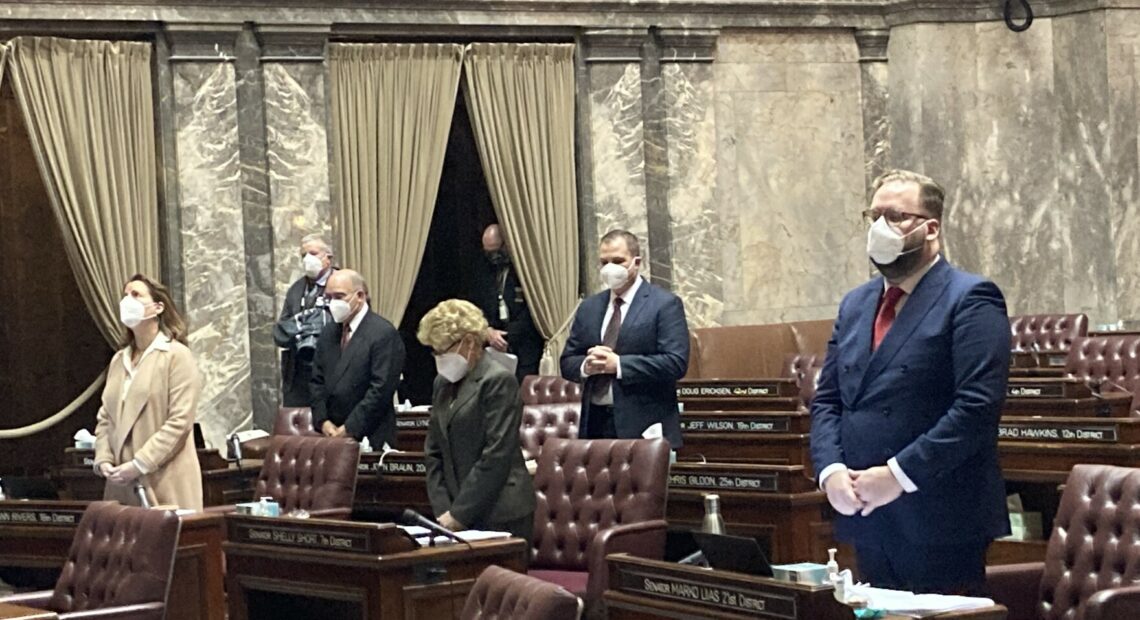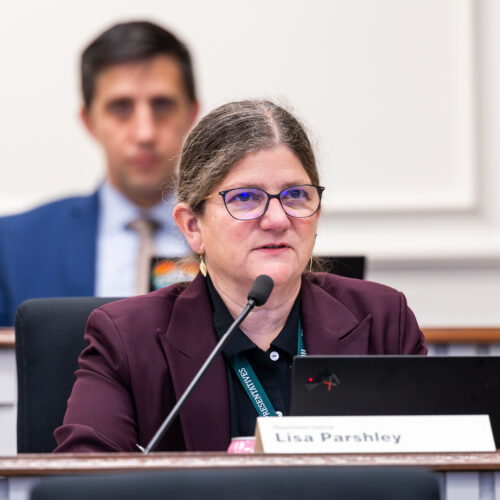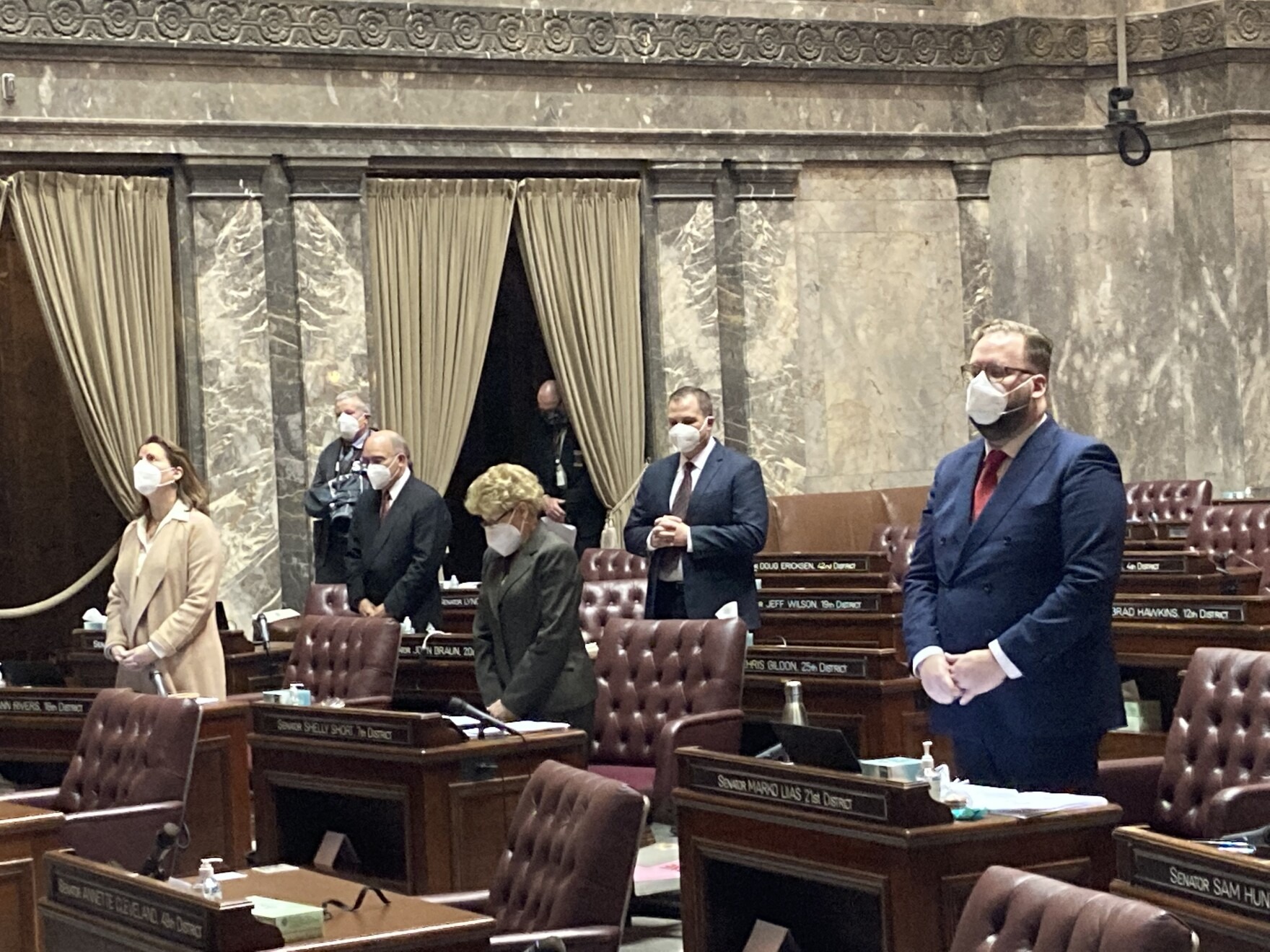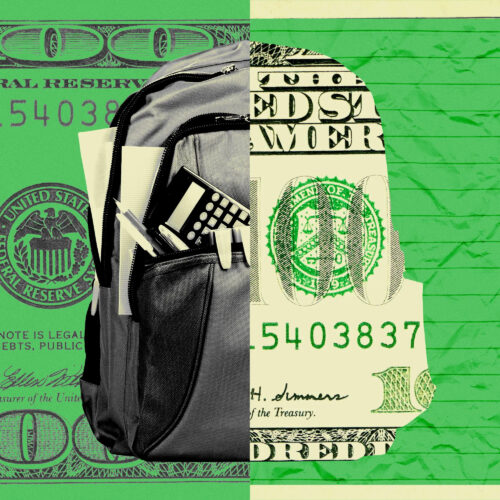
Omicron Scrambles Plans For Start Of Washington’s Legislative Session
Read
So much for the best laid plans for Washington’s 2022 legislative session. The highly contagious omicron variant of COVID-19 has upended what was supposed to be a mostly in-person start to the 60-day session, at least in the House of Representatives.
Over the holidays, as case counts rose steadily, the chief clerk of the House announced that his chamber would hold its floor sessions remotely to start the session.
“The House will reassess its operations every two weeks, and may make future adjustments as conditions warrant,” Bernard Dean, the chief clerk, wrote in an email.
The change was approved by Democratic leaders in the House.
“The House continues to prioritize safety, transparency, and doing the people’s work,” Speaker of the House Laurie Jinkins said in a statement. “The omicron variant presents yet another way COVID is challenging us, but we rise to the occasion by adapting swiftly and keeping those priorities at the forefront.”
Minority Republicans did not endorse the change.
“I think that we should allow people to make their own evaluation of risk,” said House Republican Leader J.T. Wilcox on Monday.
Under the new rules, a skeleton crew of up to five vaccinated, boosted and masked lawmakers along with critical staff will be allowed in the House chamber. Everyone else will participate remotely, as they did during the 2021 session. The public galleries will be closed, except to vaccinated members of the press.
The change applies only to sessions on the floor of the Washington House. Democratic leadership had previously decided that committee meetings and public hearings on bills would be held remotely.
On Monday, Democrats in the Washington Senate said they too are revisiting their 2022 session plan in light of rising COVID-19 case counts. A retreat to a mostly remote or hybrid format is likely, although a Senate Democratic spokesperson said conversations are ongoing and no final decisions have been made.
The Senate has 49 members and the House has 98. Democrats control both chambers.
When the House and Senate established their plans for the 2022 session in November, with the goal of being more in-person than last year, omicron wasn’t yet on the radar. But now with case counts spiking and epidemiologists saying that people with omicron are spreading it to an average of three other individuals, legislative leaders are scrambling to adjust to a new reality.
Like last year, all legislative proceedings will be available through TVW, the state’s C-SPAN network, and the public will be able to testify on bills remotely.
Still, the House faces potential criticism for requiring most lawmakers — even those who are vaccinated and boosted — to debate and vote remotely while also walling off the public from in-person access to the legislative process.
Initially, though, the change in House protocols may not have a huge impact. Most of the early action during the legislative session happens in committees, not on the floor.
Even before the change, the House plan called for a limited number of vaccinated lawmakers to be allowed on the floor of the chamber while others would participate remotely. While unvaccinated members are banned from the floor, they will be allowed to access their offices so long as they submit to COVID testing three times a week.
In fact, the House will now require all lawmakers and staff who are working onsite to test on Mondays, Wednesdays and Fridays.
By contrast, the original plan adopted by the state Senate did not limit the number of members who could attend floor sessions and didn’t require proof of vaccination. Instead, the Senate opted to require daily testing of all lawmakers and staff — even those who are vaccinated.
The House and Senate also took a different approach to meetings between lawmakers and constituents or lobbyists. While the Senate plan encouraged remote meetings, it allowed lawmakers to hold in-person meetings with up to three other people. The House plan, however, does not allow any public access to member offices or meeting spaces.
The legislative session is scheduled to begin next Monday, January 10.
Related Stories:

Striking workers in Washington could get access to unemployment claims if bill passes
A proposed bill that would give striking workers some access to the state’s unemployment benefits is getting closer to becoming law in Washington.
Majority lawmakers in the House Committee on Labor & Workplace Standards moved the bill out of committee on Friday, with a recommendation to pass it. This, after the bill narrowly passed the senate with 28 yeas and 21 nays earlier this month.

State considers closure of residential facilities for people with disabilities
Ever since he started working at Rainier School in Buckley, Washington, Willis McNabb has been hearing that the state was going to close it. This time, he said it feels more real.
“I’ve never been so worried as I am today,” McNabb said.
Since 1991, McNabb has worked at Rainier, which gives people with intellectual and developmental disabilities a place to find community, learn, work and receive comprehensive health treatment.

Washington bills attempt to give public workers power to bargain on AI
There are only so many things employees get to have a say over in their jobs. Which laptops or messaging app your office uses might not be your call.
For a while, decisions on the use of technology in the workplace have been up to management for public workers in Washington state, thanks to a law passed in 2002. But now, some lawmakers want to pass an exemption that would allow public sector employees to bargain on one broad and ever-changing technology — artificial intelligence.
















